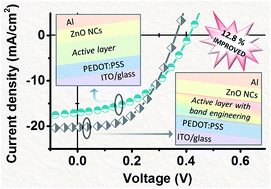PbSe nanocrystal solar cells using bandgap engineering
Abstract
Benefiting from the strong quantum confinement, PbSe nanocrystals allow their bandgap and absorption edge to be tuned to optimize the absorption of the solar radiation. Here, bandgap engineering-based photovoltaic devices were designed, fabricated, and characterized using two-size PbSe nanocrystals. The fabricated two size particle photovoltaic devices showed 12.8% higher power conversion efficiency compared to that of the single-particle devices, as a result of the enhanced photon absorption and the improved charge transfer.


 Please wait while we load your content...
Please wait while we load your content...